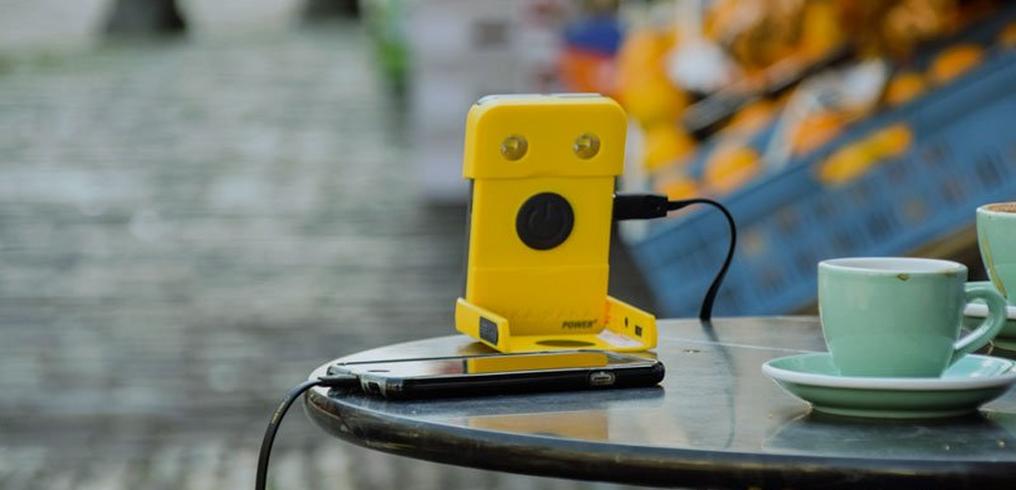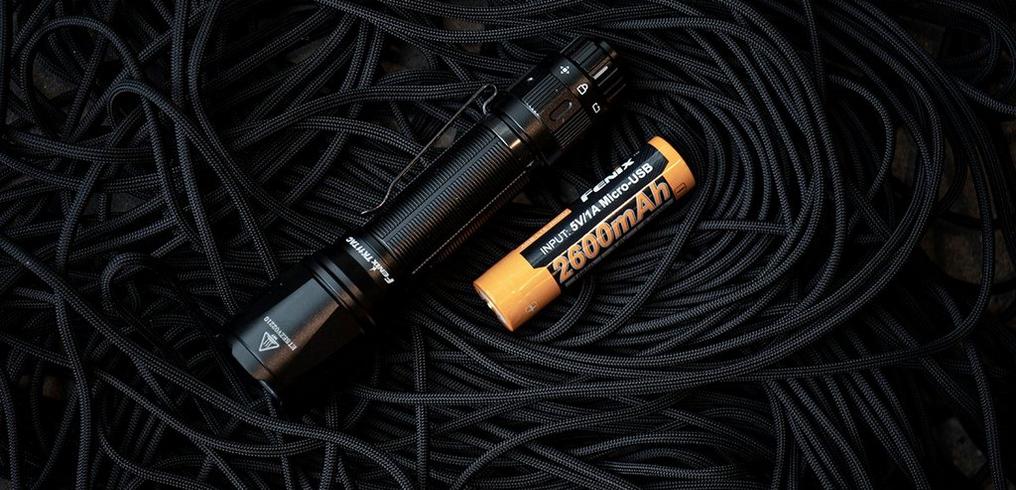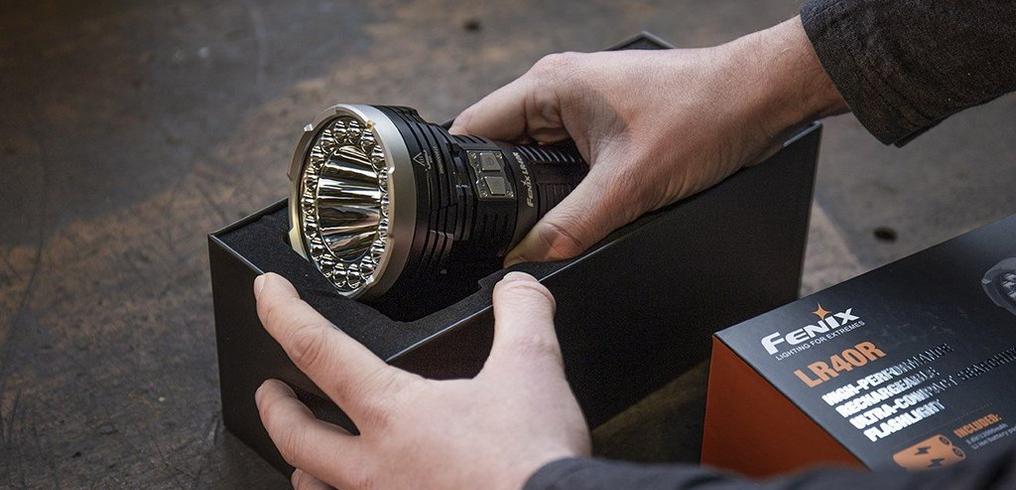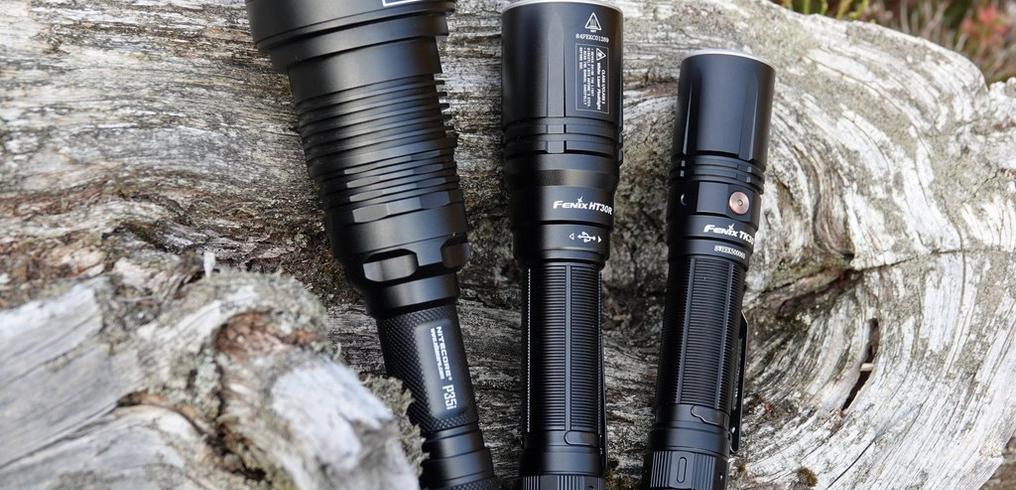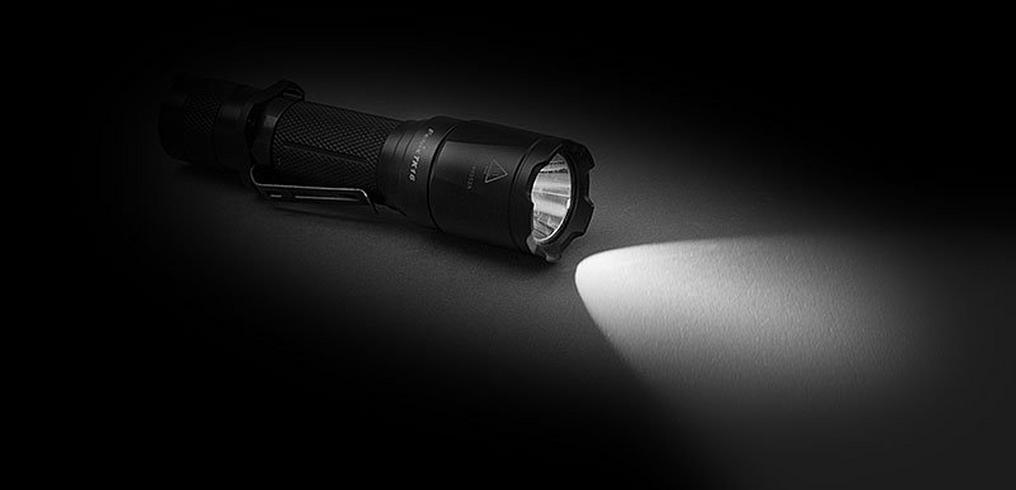Which type of battery is most suitable for my usage?
A lot of flashlights can be used with multiple types of batteries. It isn't always about the size of the battery - it's also a question of the technology that gives the battery its capacity. As such, different batteries are suitable for different kinds of use.
Please note that not all flashlights can handle all types of batteries! Always check the product page of the product or look in the manual to see if a light can run on a certain type of battery!
18650 battery, 21700 battery, CR123A battery or 16340 battery?
A light that runs on 18650 batteries can often also handle CR123A batteries. Both have advantages and disadvantages.
18650 batteries
18650s contain Li-ion cells and are highly suitable for flashlights that are used regularly. They provide lots of power and are rechargeable, making them an attractive and economical choice for intensive use. They don't leak, and they have a high capacity. But you do have to bear the following in mind: 18650 batteries like to be used regularly. Are you planning to put an 18650 battery away for longer than 4 months? Then you'll have to use it and recharge it in the meantime. They stay at their best when used regularly.
21700 batteries
21700 batteries are rechargeable lithium-ion batteries. Like other batteries, they are named after their dimensions: 21700 batteries are 21 mm in diameter and 70 mm long. Because they are rechargeable, they're ideal if you use your flashlight regularly. It's good to remember that 21700 batteries can be protected or unprotected. This protection ensures that the battery doesn't get overloaded. Moreover, a protected battery doesn't overheat. So always choose a high quality battery. The biggest difference between 18650 and 21700 batteries is their size. 21700 batteries are slightly bigger than 18650 batteries. Because it is a little bigger, a 21700 battery also has more power and a longer run time.
CR123A batteries
These are lithium batteries that cannot be recharged. Often, you can replace one 18650 battery with two CR123A batteries. The big advantage of a CR123A battery is that it holds its charge for 9 years without any significant self-discharge. They also perform better in very cold conditions than Li-ion batteries. Are you thinking of leaving a flashlight in your meter box in case the power goes out? Or in your car for a long time in case you break down? Then CR123A batteries are generally a better choice than 18650 batteries.
16340 battery
From a technical point of view, a 16340 battery is equivalent to an 18650 battery, but in the size of a CR123A battery. For old flashlights that are too narrow for an 18650 battery but can take CR123A batteries, or for lights that normally run on one CR123A battery, 18340 batteries are definitely worth considering. Some flashlights that run on one CR123A battery deliver a higher capacity with a 16340 battery than with a regular CR123A battery. On the other hand, a 16340 battery usually has a relatively low capacity and therefore doesn't last for as long. The advantage they offer is that they're rechargeable. Again, they need to be used and recharged regularly in order to maintain their capacity as well as possible.
Penlite AA batteries: alkaline, lithium, Ni-MH or Li-ion?
The AA battery is perhaps the most widely used battery we know. From remote controls to clocks, you can find them in everything. However, a lot of people don't get any further than “rechargeable AA” and the “normal” ones, even though there are actually two other options. Each has its own advantages and disadvantages.
Alkaline AA batteries
Of the AA batteries we all know so well, alkaline batteries are by far the most commonly used. They're very cheap, and available for sale on almost every street corner. Alkaline batteries aren't rechargeable, but due to their relatively low price, that isn't such a big problem. What you do have to watch out for is leakage. If you leave your alkaline batteries in a flashlight for a long time, you run the risk of battery leakage. If the light also demands a lot from the batteries - such as high-power LED flashlights with more than 1000 lumens - the risk of leakage increases significantly. So check your batteries regularly and replace them in time, or preventively if necessary.
NiMH batteries
When people talk about rechargeable AA batteries, they're usually referring to NiMH batteries. They're slightly more expensive than alkaline batteries, but they are rechargeable, making them a better option for intensive use. They do suffer from slight self-discharge, so we highly recommend that you use and charge these regularly as well. Fortunately, you won't have to deal with any leakage.
Lithium AA batteries
Lithium AA batteries have higher strength and capacity than alkaline batteries. In addition, they hold their voltage for up to 12 years without self-discharge, and they also perform really well at very low temperatures. Battery leakage is also a lot less common, which makes them a good choice for lights that are used sporadically, like an emergency flashlight in your meter box or in the glove compartment of your car. However, lithium batteries are not rechargeable, and are somewhat pricier than the alkaline version. Some lights need lithium batteries to achieve their maximum light intensity. Just check carefully whether your flashlight can handle lithium batteries before you use them.
Li-ion AA batteries: 14500 batteries
There is an exotic alternative for flashlight users who value performance above all else: the Li-ion AA battery. Better known as the 14500 battery. They provide lots of power and are rechargeable, making them an attractive and economical choice for intensive use. They don't leak, and they have a high capacity. But you do have to bear the following in mind: 14500 batteries like to be used regularly. Are you planning to put a 14500 battery away for longer than 4 months? Then you'll have to use it and recharge it in the meantime. They stay at their best when used regularly. So they deliver more power, but they don't maintain it for as long. To prevent damage, always check carefully beforehand whether your flashlight can handle 14500 Li-ion cells.

